Enjoy Extra Space in Your Home Without Spending Too Much
Homes are often built with an unfinished basement–a space with incredible potential that mostly becomes a place to store your junk. If your home sits atop one of these giant “junk drawers”, or especially if your basement is empty, you have an amazing opportunity to increase the livable space in your home without having to spend a fortune doing it.

And here’s a sneaky hack to save money: Unlike the main living areas of your home which usually have to be completely finished to meet building codes, you can choose to finish only a portion of your basement, and this is completely acceptable to building inspectors, in most cases.
A partially finished basement lets you create a comfortable, useful space that you have already paid for, at least partially. You already paid for the empty space and the floors, ceilings and walls surrounding that space. Why not put the finishing touch on some of those floors, ceilings and walls, so you and your family can actually enjoy them?
Homeowners often dismiss the opportunity of finishing a basement because they incorrectly believe they have to finish their entire basement. In fact, you can finish just a single room, if that’s all you need or have money to do. Later, if your needs or finances change, you can finish more.
If you have a need for more space in your home for a bedroom, home office, study, play room or other home addition, instead of thinking “outside the box” and considering opening walls on the existing living areas of your home, think “inside the box” of your unfinished basement.
Home additions that require expanding the footprint of your home can get expensive, fast. Not to mention, you may have difficulty getting this type of addition approved by your home owners association and/or your county’s building and permitting department.
Instead of expanding your house outward, try going down–down to your basement.
If your basement currently seems like a dark, cold, forbidding unfinished space, just know that almost any basement can be turned into a welcoming, warm, dry space, like any other room in your house.
Consider these advantages of a partially finished basement:
- Finishing only a portion of your basement saves you money.
- A partial basement project will take less time and mean less disruption in your life than finishing a full basement.
- Basement rooms don’t have to be finished to the same standard as the main living area of your house, so you can get creative and finish a room for less money.
- You can continue using the unfinished part of the basement for storage.
- Finishing some of your basement will almost certainly increase the value of your house.
- Finishing the entire basement later will likely be easier because you will have already laid the groundwork by installing basics such as air conditioning, electrical wiring/outlets, plumbing, etc.
- You can forego things like plumbing if you don’t absolutely require them in the basement, saving even more money.
Is Your Basement a Candidate for Being Partially Finished?
Basements come in several varieties and sizes, and may not be a great candidate for finishing. Some basements are little more than a place to put an air conditioner or furnace. Some are not full height, meaning that you have to duck down to get into them. Some are simply crawl spaces, with exposed dirt, spiders and other creepy critters. These are not the types of basement (or cellar) that can be finished without major work.
However, if you have stairs leading down to rooms that are regular height ceilings, with a concrete floor, then congratulations! You can probably finish some or all of your basement.
An unfinished basement is normally just studded walls, without any drywall. Often, very little electrical pre-wiring is done. Little to no plumbing is installed. And unfinished basements are probably not heated or cooled.
When you finish your basement, you’ll be overcoming some or all of these shortcomings, while also creating rooms that are “finished” with walls, paint, flooring, etc.
Don’t miss our other Basement Finishing Tips.
Cost to Refinish a Basement
Before we dig into refinishing details, let’s talk money. Most people want to know the price of something before they buy it, and that’s wise, especially when talking about home renovations. Materials, labor and expertise are expensive. This article is primarily focused on how you can keep your cost down by not finishing your entire basement and by using some frugal tricks to save money.
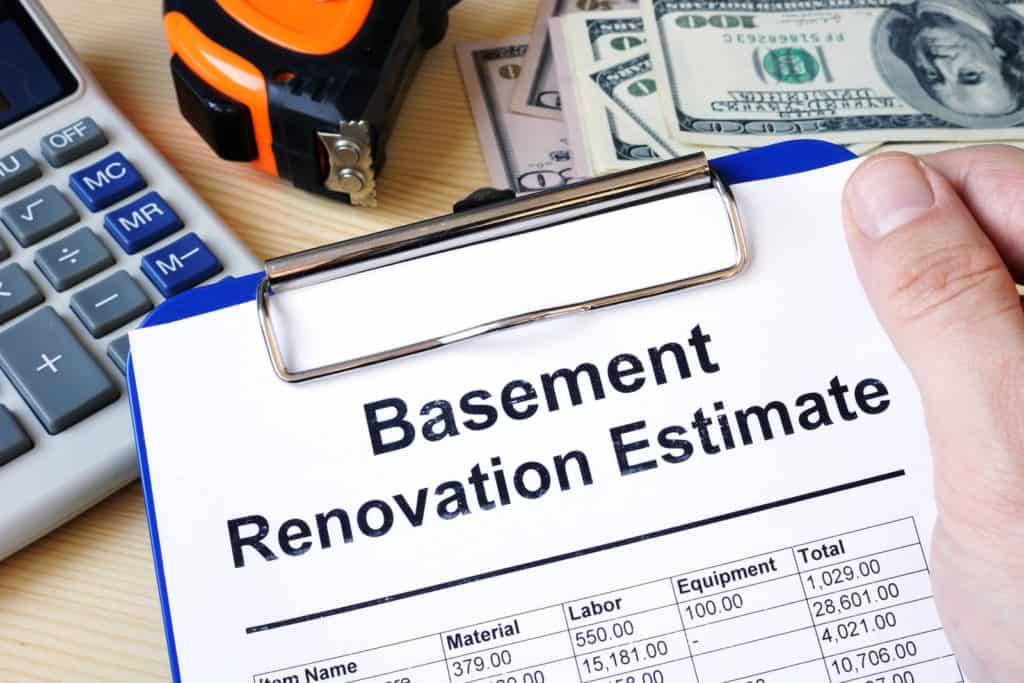
So first, let’s talk about a question lots of people ask: How much does it cost to finish a basement? The answer to this question depends on a hundred different factors: How big is the space? How many rooms? What kind of rooms do you want added? Is demolition required? Is plumbing being installed? Was the basement built with any plumbing pre-installed? What kind of floors? Ceilings? Walls? What level of finish do you want? Simple? Middle-of-the-road? High end? And on and on. A simple, one-room basement might be $10,000 while a full finished basement could be $60,000 to $100,000 or much more.
You have control over the cost, by choosing to only finish some rooms and by choosing the level or quality of the finishes that are used in each room.
Another big question people have about renovating a basement is “How much value will I add to my home if I finish my basement?” Or in other words, how much extra will I get when I sell my house by upgrading my basement? If I spend a dollar on my basement, will I get my dollar back when I sell the house? The answer, in most cases is no, you will not get all of your money back when you sell your house. According to Remodeling Magazine’s Cost vs. Value Report, you can expect to get back about 70% of your basement finishing investment.
This is the “harsh” truth about almost every single home remodeling project: you will NOT get back all of your investment when you sell sometime in the future. The good news, and your focus, should be on using and enjoying the remodeled areas of your home! Enjoy your new basement gym or playroom or office. If you aren’t sure you will use it, consider not doing it. Building it for the next owner will probably cost you money, not make you money.
Here’s the good news, however: if you follow some of the money-saving ideas below, you may find your return on your investment is higher than 70% when you sell.
Ready to get an estimate for your basement? Request your free estimate now while you’re thinking about it.
Where to Begin on Your Basement Remodel
The first thing to do when planning to convert a portion of your unfinished basement space to finished is deciding exactly what you want. And that will probably be dictated by your budget.
Common basement rooms include:
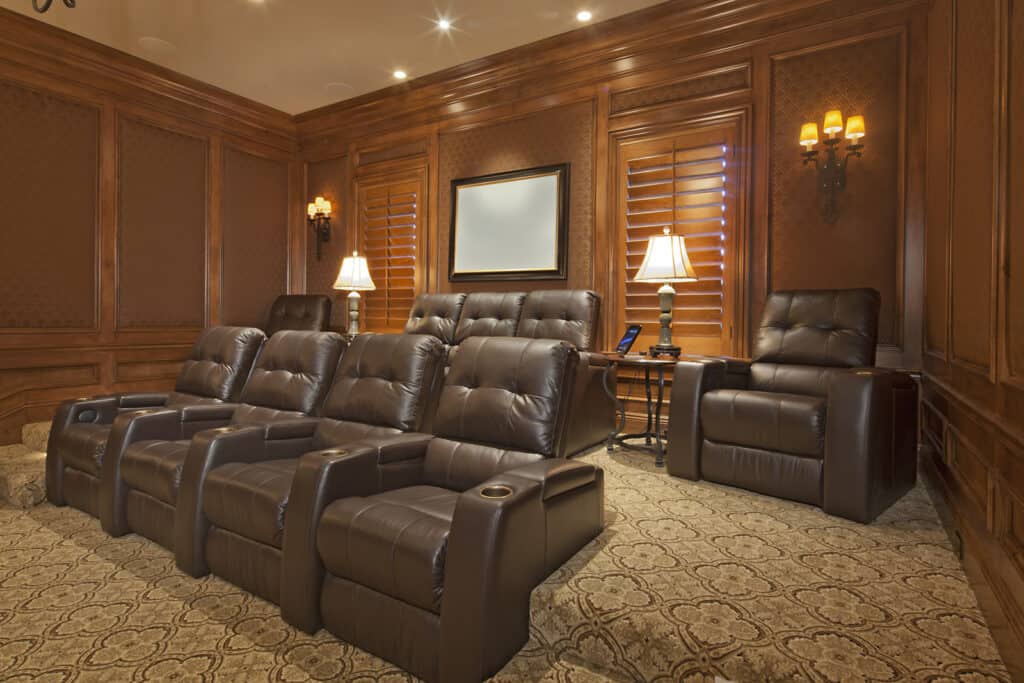
- Extra bedroom/in-law suite
- Bathroom
- Bar
- Workout room/home gym
- Kitchen or kitchenette
- Theater/video room
- Playroom/game room
- Home office
- Wine cellar
- Craft/hobby room
- Laundry room
- Music studio
- YouTube channel studio
- Etc.
Once you have a general idea of the space or spaces that you want to add, ask yourself the following questions:
- Do I need plumbing in the basement for the rooms I want? Will I need plumbing in the future?
- Do I need air conditioning and heat in the basement?
- Do I want fully finished rooms that match the quality of the construction and level of finish in the main living area of your home upstairs, or would I be satisfied with “creative” finishes that save money? (more on this in a moment)
- Do I need to add windows? A door to the outside? (Egress windows/doors are typically required by code, to provide a means of escape in case of emergency and to provide firefighters a means to enter the premises.)
Once you have your rooms selected, it’s time to decide the level of finish you want. You can go all out, finishing the rooms with drywall, hardwoods and more. Or you can keep it simple, using some existing surfaces and choosing less expensive options. It’s up to your taste and budget.
Creative (Budget-Friendly) Basement Finishing
Partially finishing a basement can mean a couple of things:
1. You finish only a portion of the available space, not the entire space.
2. You finish the space, but not to the same degree or quality as the main living space in the house. For example, you might leave the concrete flooring, without adding carpet or hardwoods, or you may choose to leave the ceiling unfinished, while putting drywall only on the walls.
Because your basement doesn’t have to be finished to the same level or quality as your main living space, you can get creative, saving money and time, while still creating a usable space.
Here are seven examples to get you thinking about creative money-saving options:
1. Walls don’t have to be made from drywall
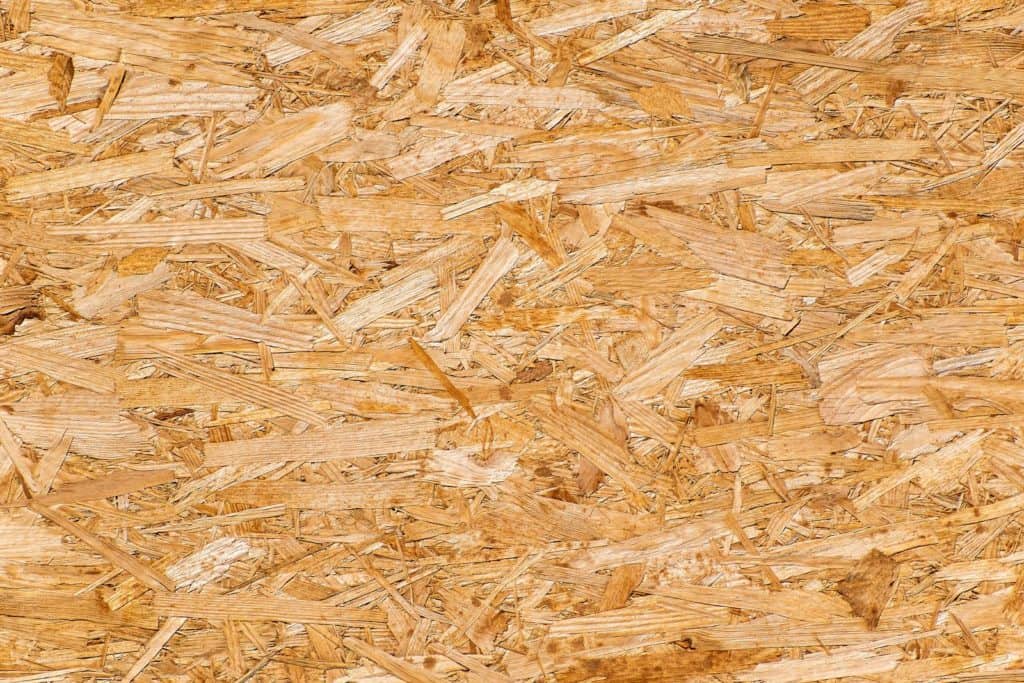
Instead of using drywall, finish basement walls with alternative wall material such as oriented strand board (OSB) or other less expensive material. Especially if you are finishing your basement yourself, consider finishing walls with a material other than drywall. If you don’t need the clean look of drywall, OSB is a good option. Working with drywall can be challenging, and finishing it (taping, mudding, sanding, re-coating, etc) takes time, patience and skill most do-it-yourselfers don’t possess.
OSB is relatively inexpensive, and can be purchased for roughly the same cost as drywall, but without the added cost of the finishing. Hammer it up, and if you want it painted, apply primer (may require several coats due to its porous nature) and paint. Some OSB may have a protective wax coating that can make painting difficult, so you may need to apply a wood floor wax stripper prior to painting. It is possible to smooth out the fibers in the board by applying a polyester resin filler.
2. Leave basement ceilings unfinished.
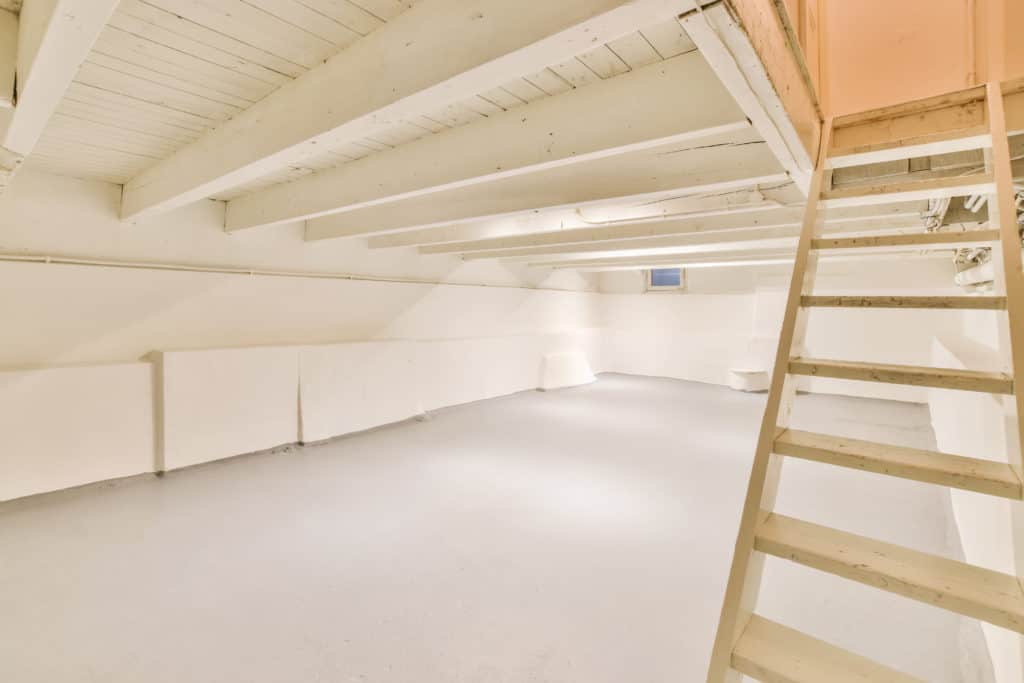
Unfinished ceilings have become commonplace in restaurants, office buildings, industrial lofts and more. Why not embrace the look in your basement?
You can install drywall on the walls, but leave the ceiling unfinished. For an improved look, the ceiling can be spray-painted. White, black or gray paint looks great in most rooms, but you can choose any color you want.
One benefit of not finishing the ceiling is that your home’s wiring, plumbing and HVAC ducting remain accessible in case they need maintenance.
3. Keep the layout simple.
Adding additional walls in your basement will add to the cost. If you don’t need to create additional rooms within the existing framing, you can save money on framing, drywall, doors, paint, electrical and more. If you need to subdivide a room, consider temporary curtains or moveable dividers as a way to create spaces without having to spend a bunch of extra money. If you are leaving the ceiling unfinished, hanging curtains from the existing ceiling joists is fairly easy.
Basements often contain posts and other necessary load bearing walls. After all, the root word of basement is “base.” It sits at the base of your home. It supports the floors above.
If you are hoping to open up your floorplan and make it even simpler than the framing that was originally built into the home, tap the brakes for a moment! Removing posts and studded walls to get an open floor plan may be possible but expect to pay a hefty sum. Likely, those are load-bearing posts and walls.
It is possible to remove those posts and walls by adding beams or laminated veneer lumber (LVLs) that span the area where the support currently sits. Wood beams have limitations which may necessitate steel beams instead. Installing any type of beam becomes complex and installing steel beams is even more difficult due to their length and weight. Just getting them delivered and into your basement can be an expensive and nearly impossible task.
You may need an engineer to draw up plans and a permit may also be required. A custom fabricated beam may be needed.
If saving money is your top priority, leaving the walls the way they were originally framed will save you money.
4. Floors are already there.
Unless your basement floor is just bare dirt, you already have all the floor you need for a usable space. While concrete floors aren’t the sexiest, they might be enough to get by. You can dress it up with rugs or even remnant carpet.
For a step up, luxury vinyl tile (LVT) looks great, yet costs as low as $1.50/sq ft.

It is possible to paint the concrete floor with simple paint, but to do it right, you should consider an epoxy painted floor. This will cost considerably more than LVT, around $7.00/sq ft.
Foam mats that interlock are particularly appropriate if you are installing a home gym area. These cushiony squares lock together and can be arranged and/or cut to fit in any area. They can be installed directly on top of the concrete floor. Most come in black, but lighter colors are available as well as some that resemble wood or other patterns. Cost starts at around $1/sq ft.
5. Skip central heat and air.
Heating and cooling your basement may be an absolute necessity, depending on where you live, the moisture level of your basement, and what you plan to do in your basement. If you are going high-end with your finishes, you probably won’t want to skimp on the HVAC system.
But if you are trying to save money or you live in a relatively mild climate, adding an expensive system may not be necessary.
If you are only finishing a small portion of your basement, but anticipate finishing more in the future, investing in a full HVAC system, including ducting the entire basement, is probably a wise move. You’ll spend more now, but when you’re ready to finish more of your basement later, everything will already be in place.
While we’re on the subject of HVAC, one option to consider is tapping into the ducts and air unit that feeds the first floor (the floor just above your basement). Yes, this is possible. However, you should consult with a professional to determine if your system is capable of heating or cooling both areas. If your system is not capable of handling the volume of air in both spaces, you’ll end up with neither space being the temperature you desire.
There are alternatives to heating/cooling your entire basement, such as installing a ductless mini split system. These allow you to cool just a single room, at a fraction of the cost of an entire HVAC system. Ceiling fans are another simple way to move air and provide “cooling breezes.”
If you don’t want to spend the money on HVAC now, but you have a problem with high moisture, consider installing a dehumidifier. Especially if you are installing drywall and other expensive improvements, the last thing you want is for moisture and mold to damage the materials while putting your health at risk.
6. No plumbing necessary.
Your basement is unique. Unlike the main floors of your home, your basement does not have to have plumbing. You don’t have to have a basement bathroom or a kitchen or sink. These are all optional. If you can live with walking upstairs to use the bathroom or wash your hands, you can save a bunch of money.
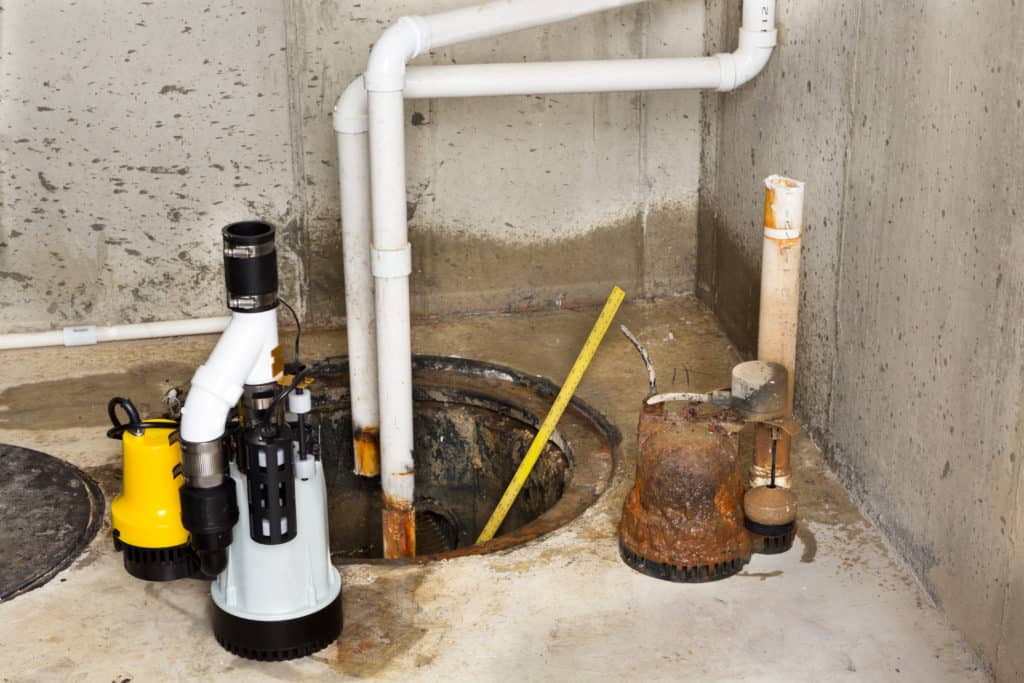
Installing plumbing in a basement normally requires also installing a pump to lift wastewater up to sewer level. These are typically installed under the concrete floor of a basement, requiring demolition and removal of concrete to make room for both the pump and any plumbing lines that send wastewater to the pump. Concrete is then reinstalled over and around the new lines and pump.
If your house had this pump pre-installed, you’re way ahead of the game. However, if you need to have this installed, expect to spend several thousand dollars. Or, you can just skip the addition of plumbing in the basement and save the money.
One important note about installing a pump: If you install a pump and later change plans for where you locate various rooms in your basement, you may have to remove the old pump and install it in a new location, potentially costing thousands of dollars. So carefully consider the floorplans for current and future rooms in your basement and where they are in relation to your pump and other plumbing.
7. Let There Be (Cheap) Lighting
Unfinished basements are typically built with minimal lighting installed. If you have a single light bulb in each studded room, you’re lucky.
You can save money on lighting in a number of ways.
First, simply upgrade the bulbs in the existing lighting fixtures. If a low powered bulb is currently installed, upgrade to a brighter, more powerful light. LED bulbs and fixtures that produce large amounts of light are now available at reasonable prices. Just upgrading from the 60 watt equivalent that’s probably installed in your fixtures to a 100 watt equivalent will make a huge improvement.
Next, if you have available outlets on the walls, consider adding lamps around the rooms.

Get creative with strings of lights. Those Christmas lights you store down in the basement 11 months out of the year? Get a few strands out, plug them in and string them up. They give off a surprising amount of light, while creating a fun and festive vibe.
Conclusion
So those are tips to help you get a basement you can enjoy using without breaking the bank. A half-finished basement or partial basement can often satisfy your wants and needs. Some basement updates are easy, do-it-yourself projects, while others may best be left to professionals. If you want to get help on remodeling your basement in Metro Atlanta, connect with Halcyon Remodeling. We are professional contractors specializing in basement finishing and are happy to provide a free estimate for your basement project.

